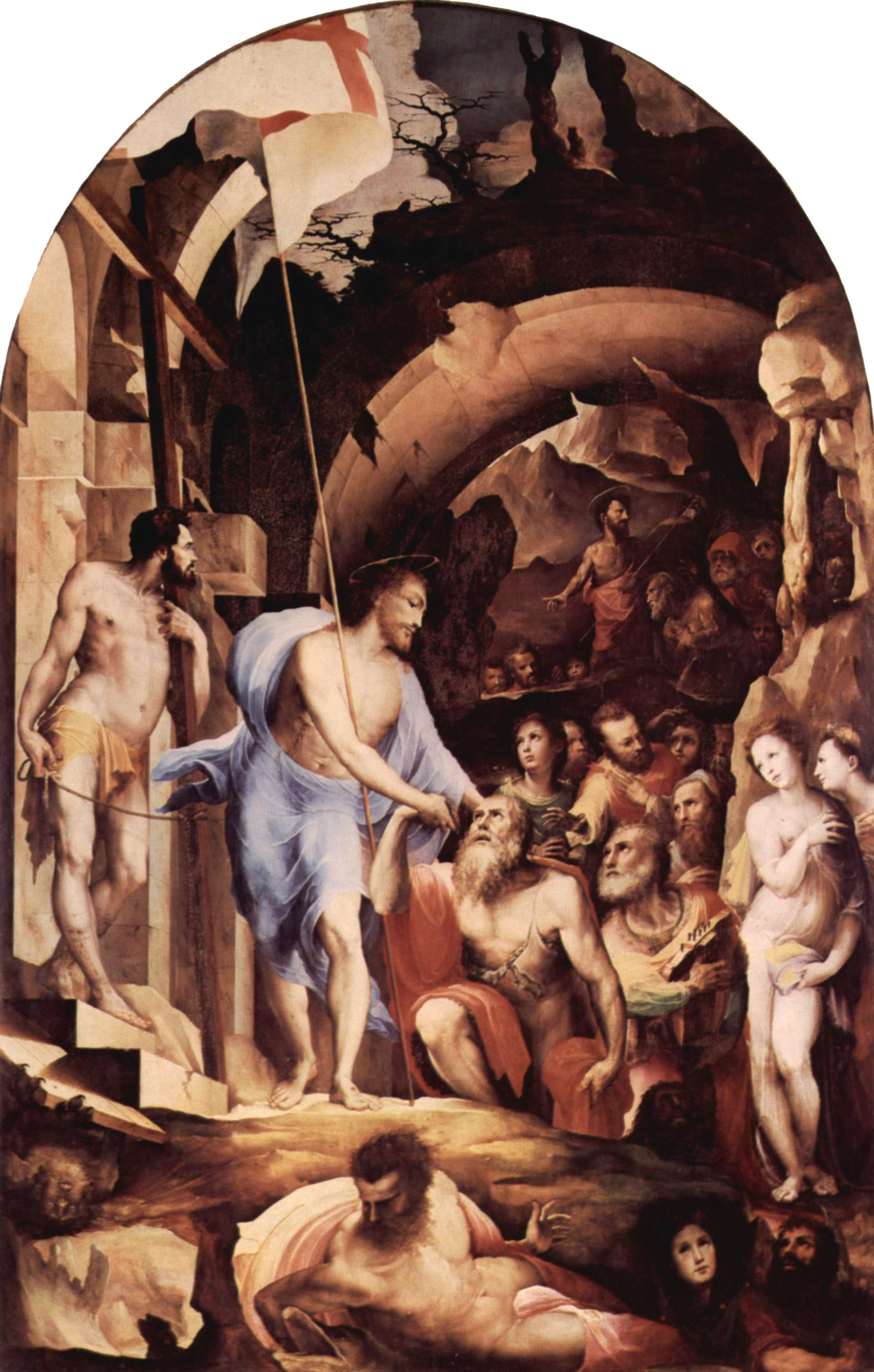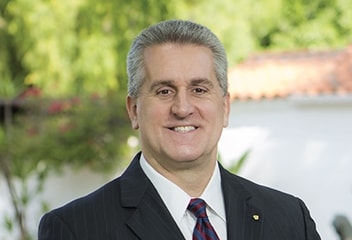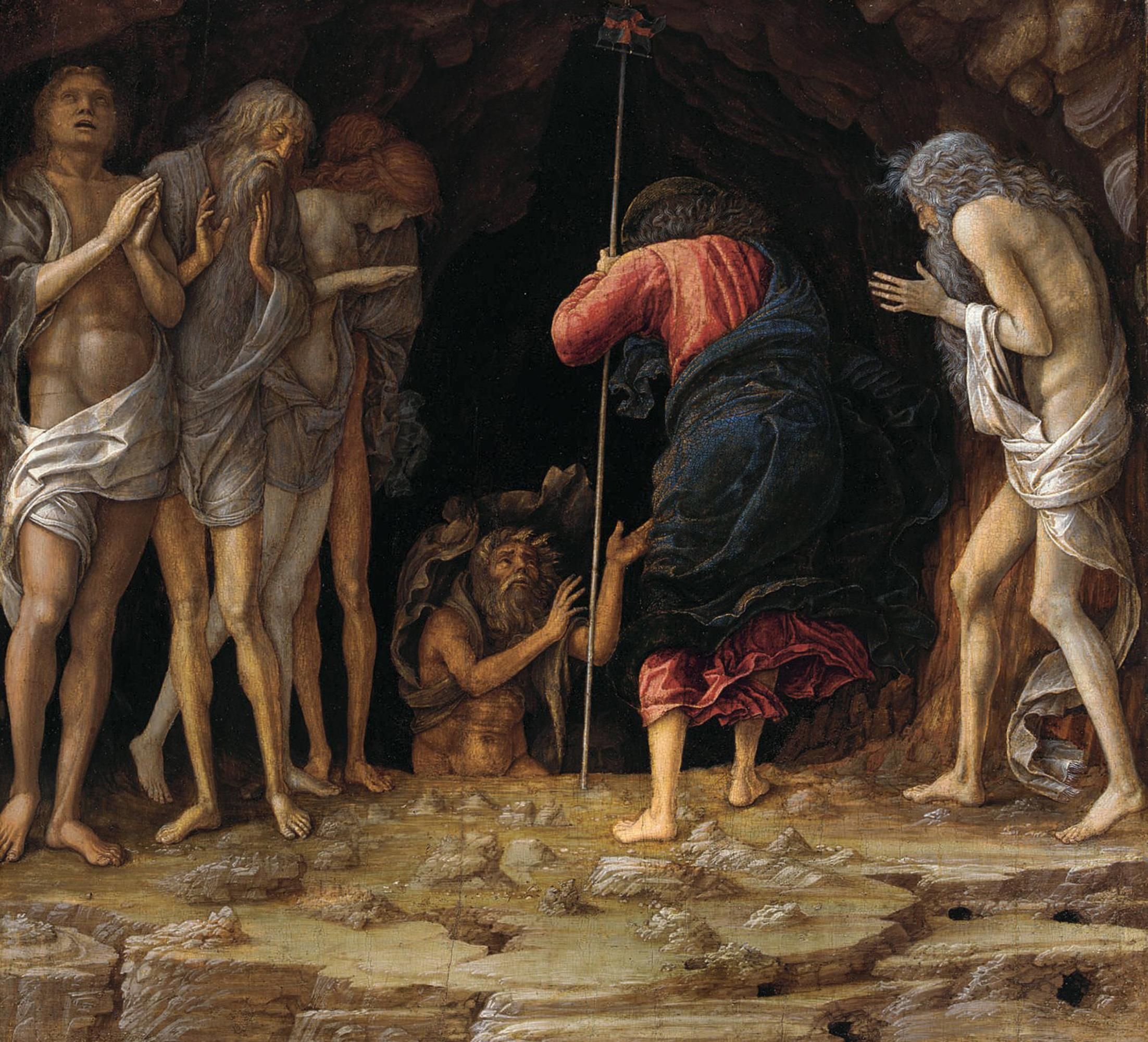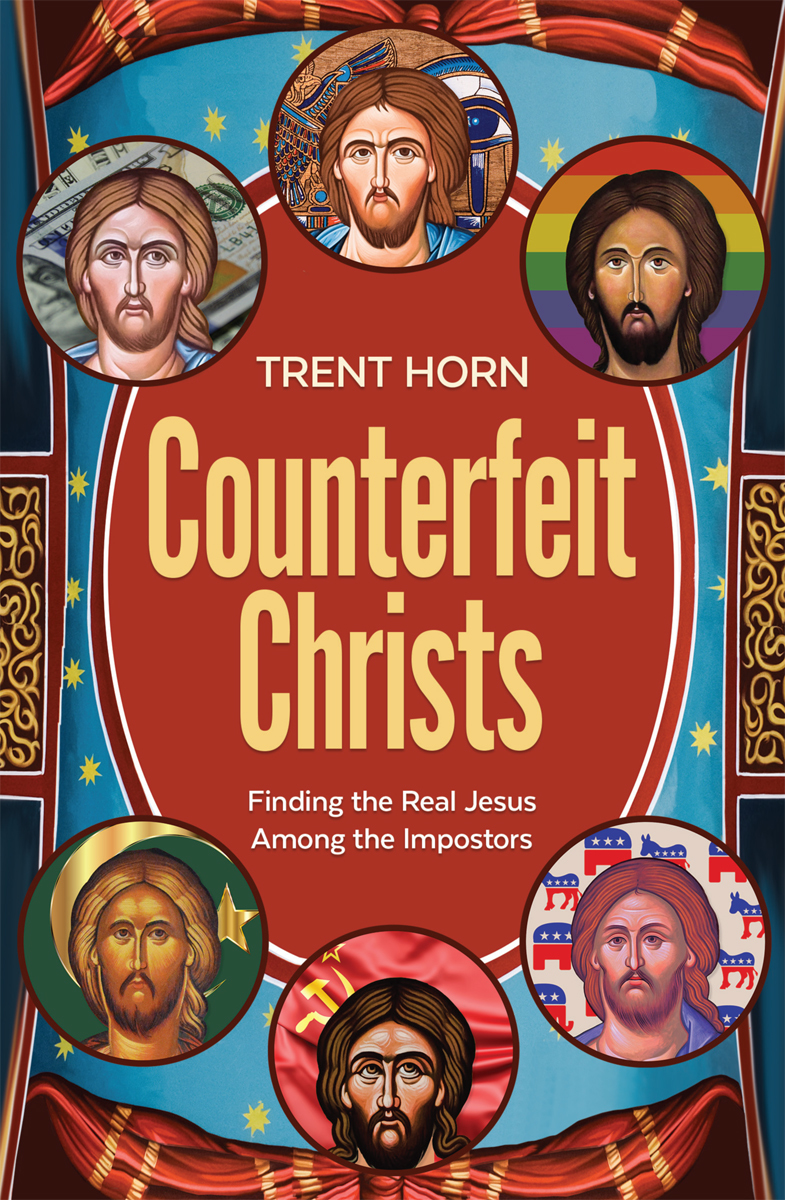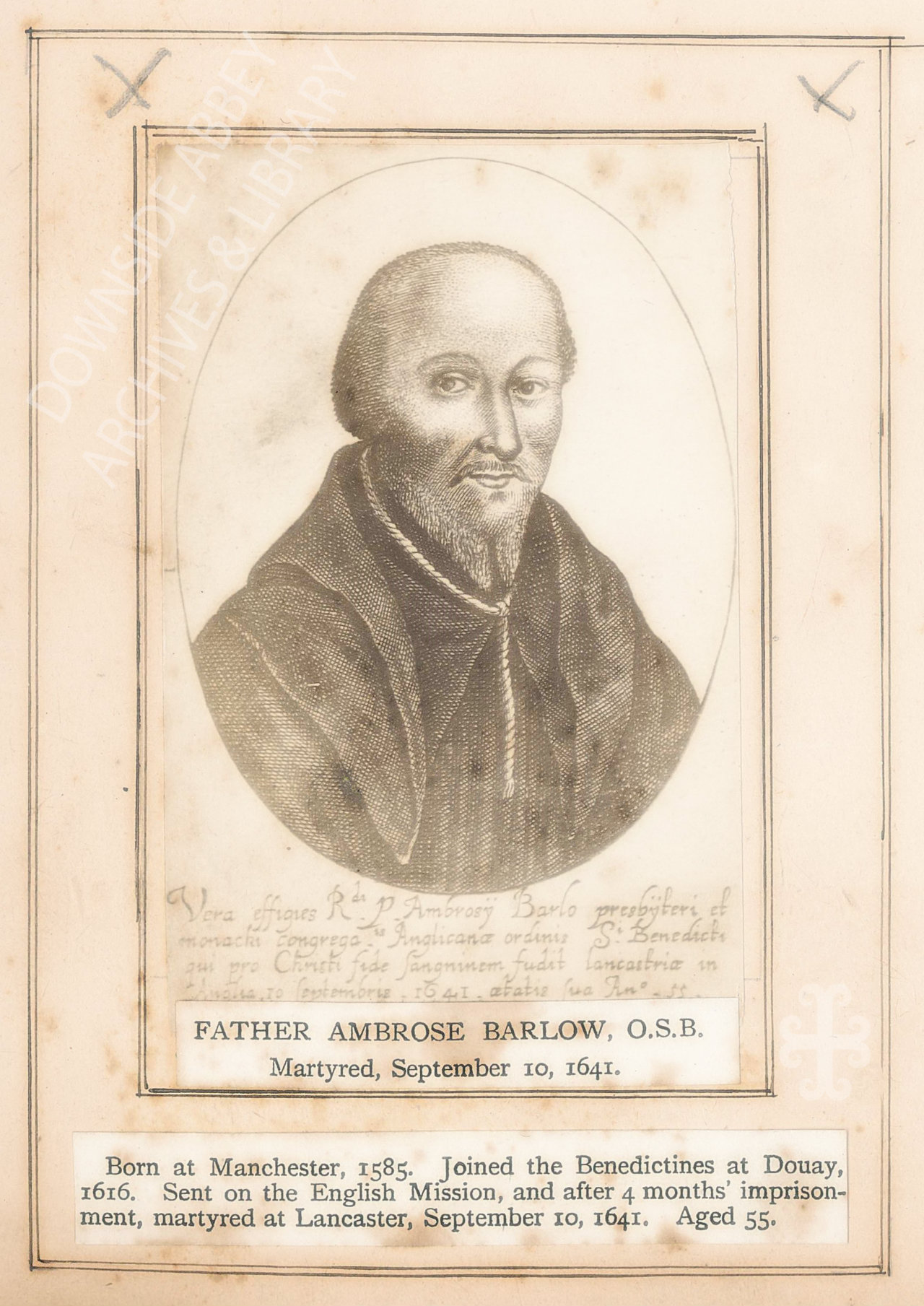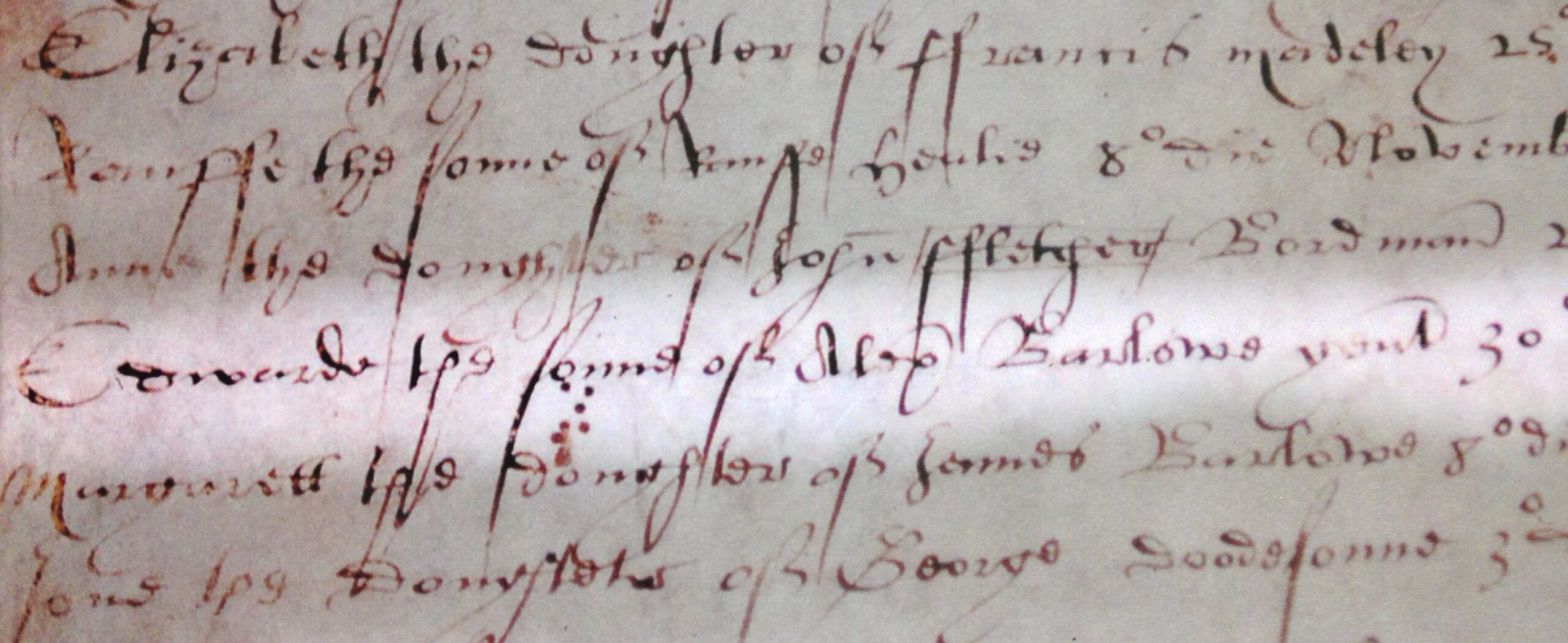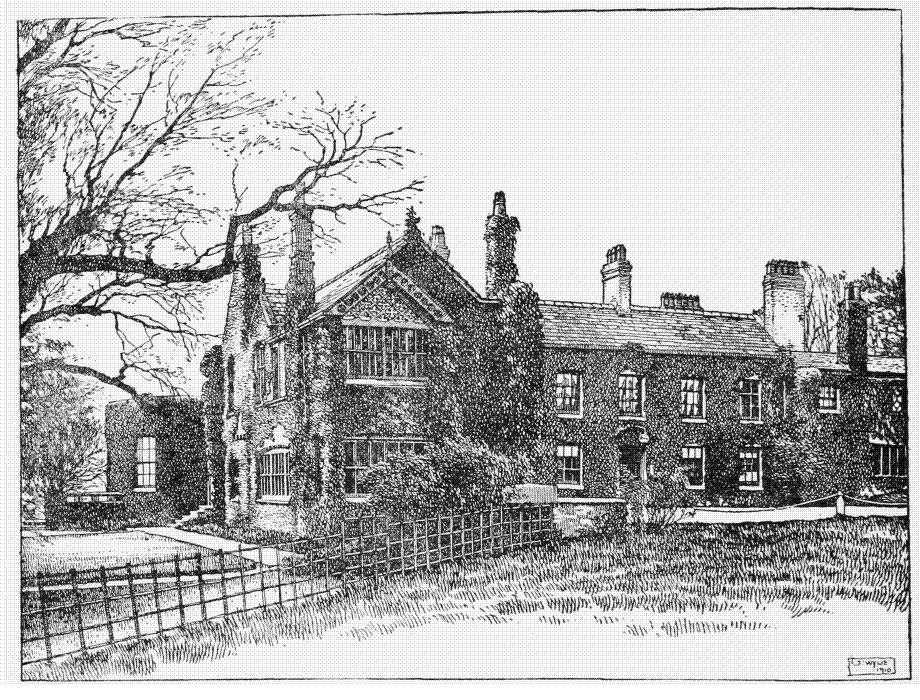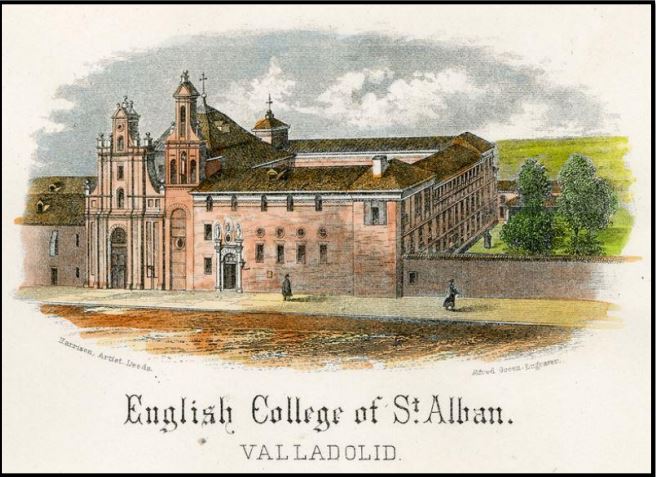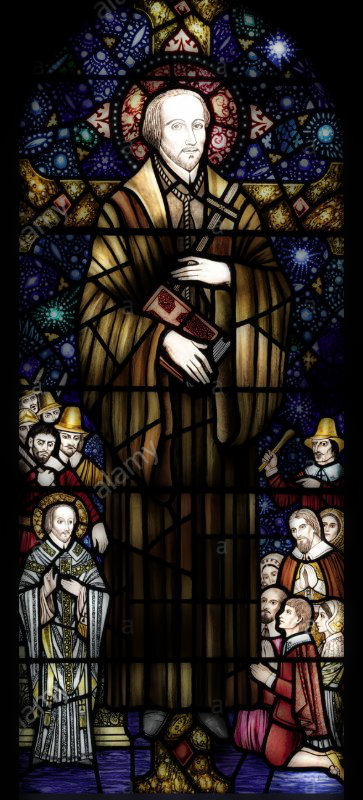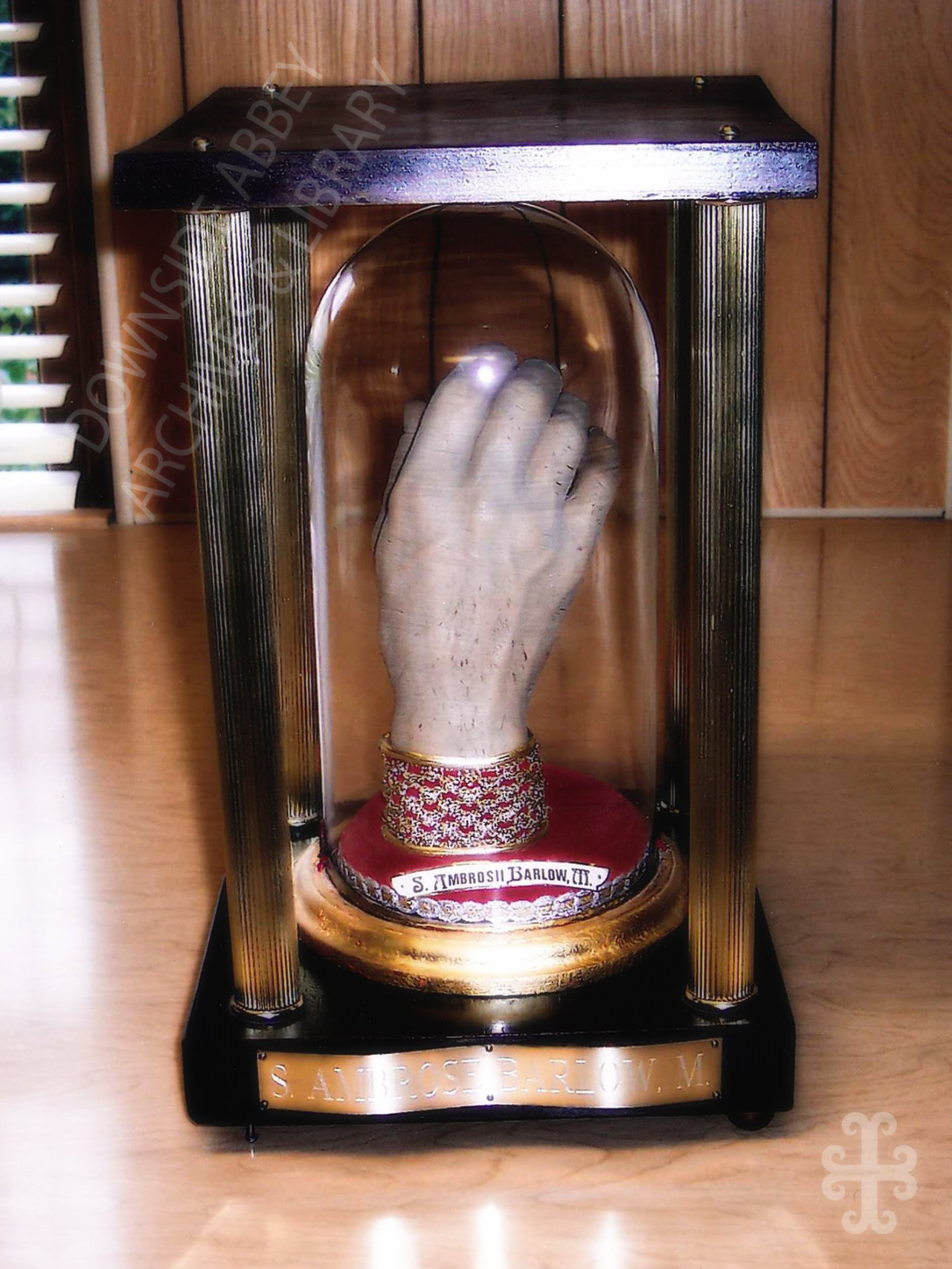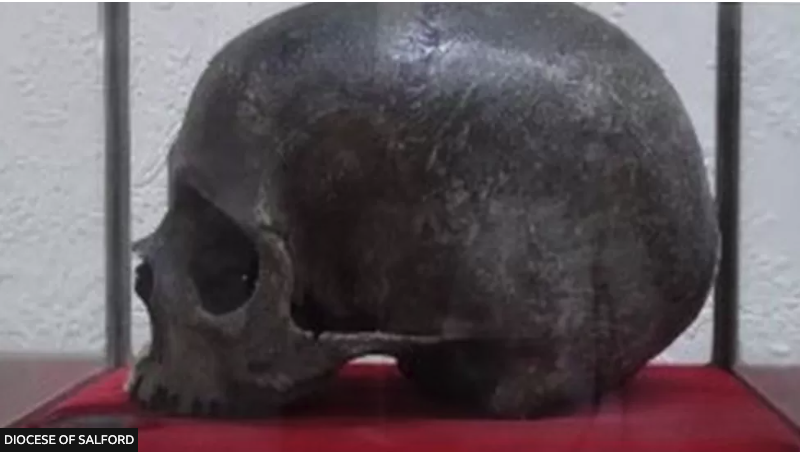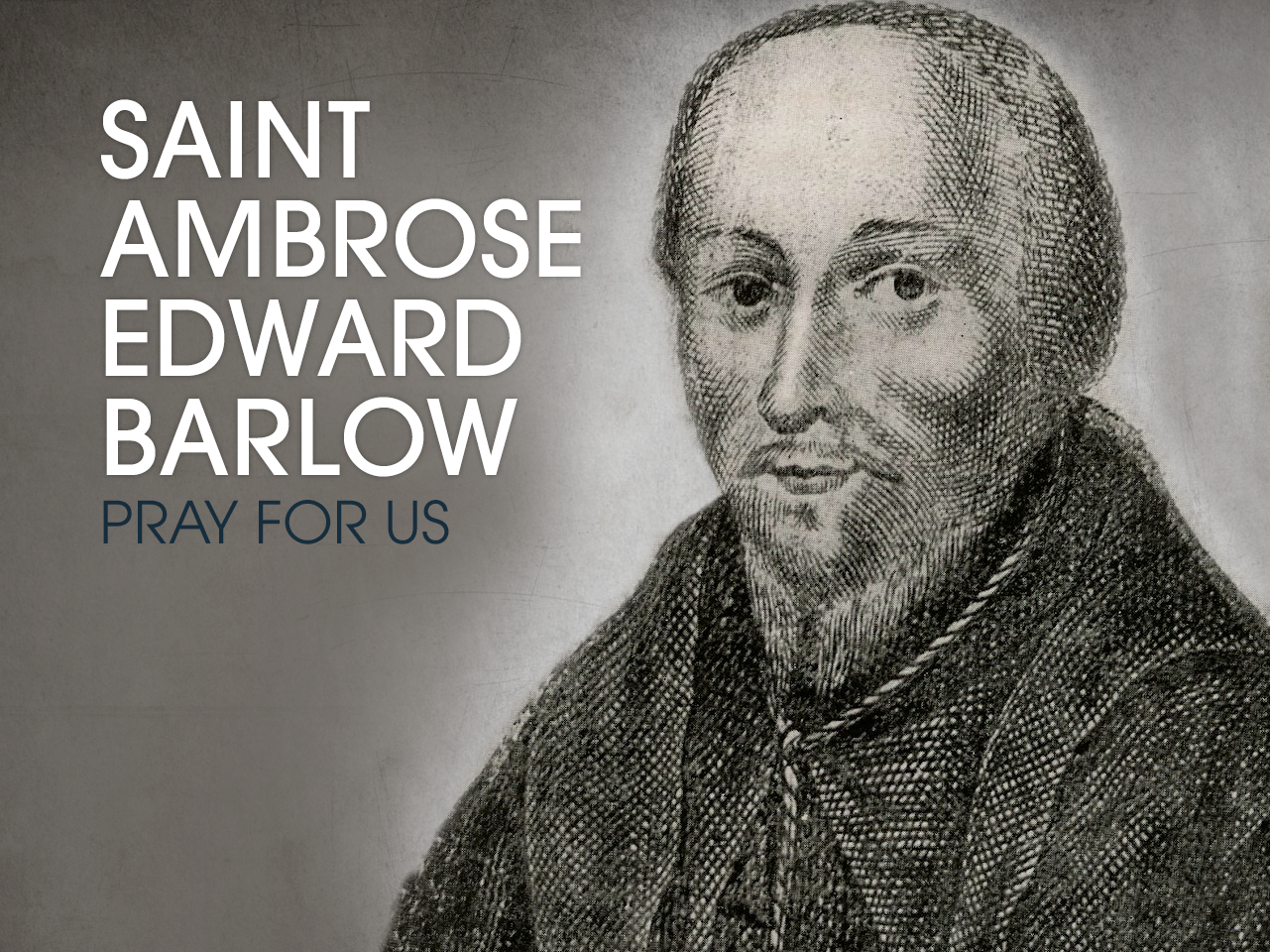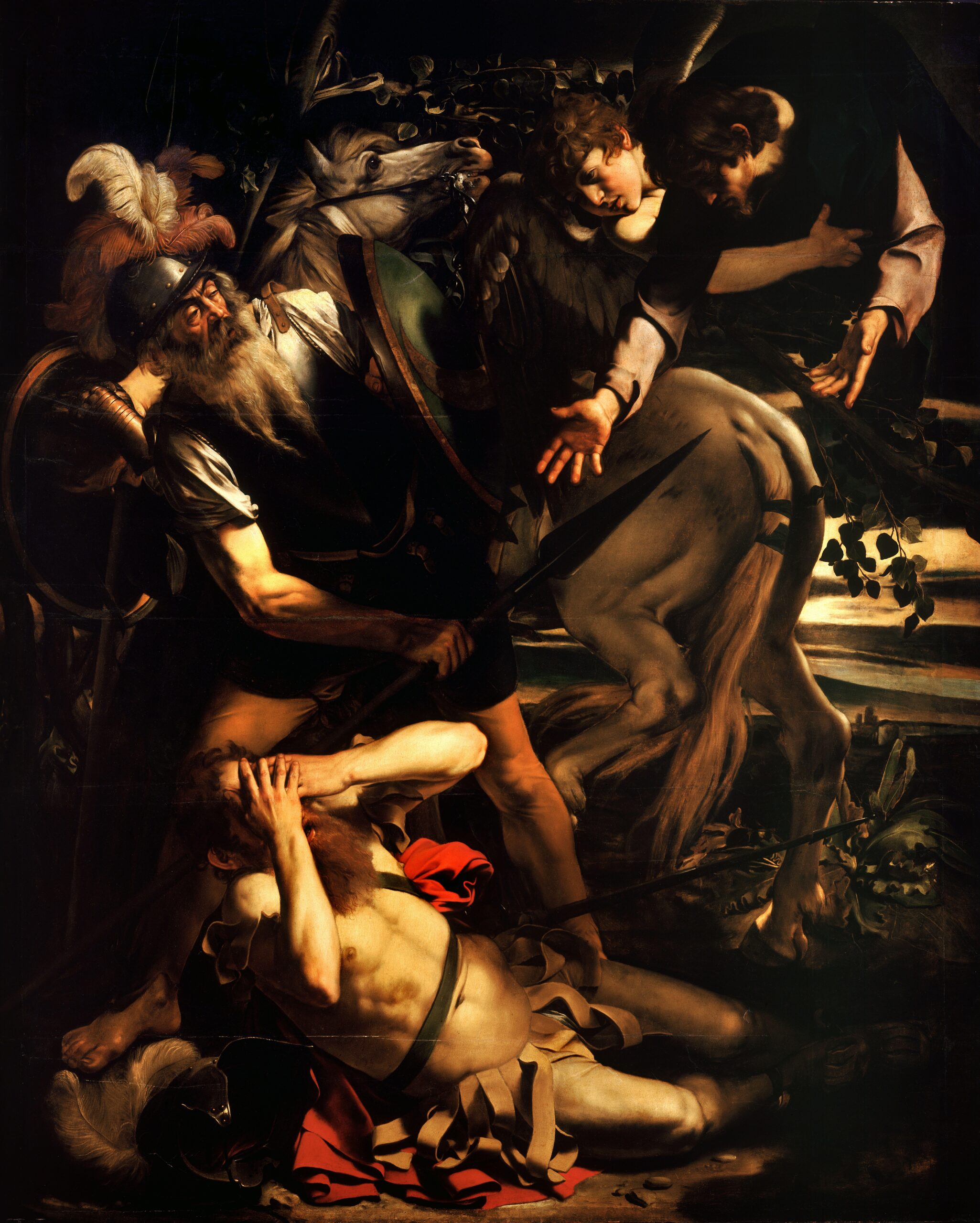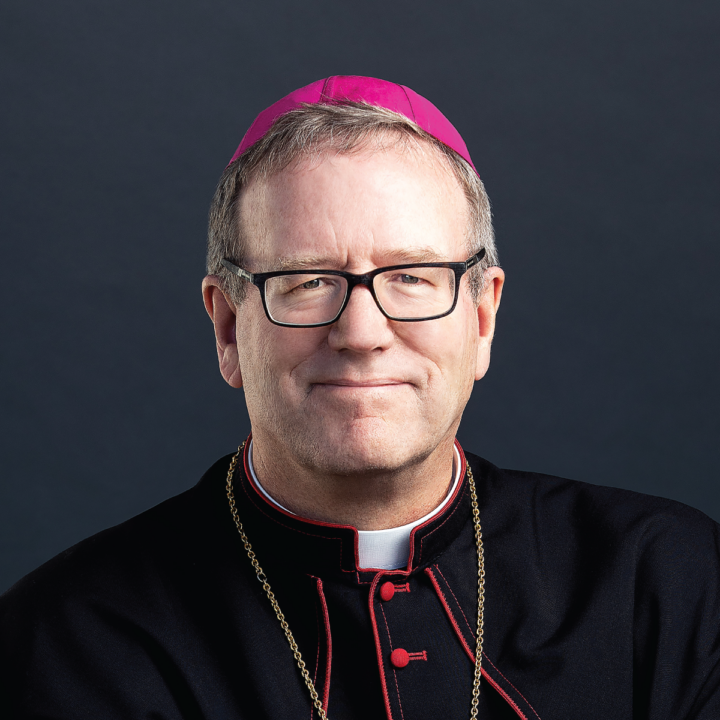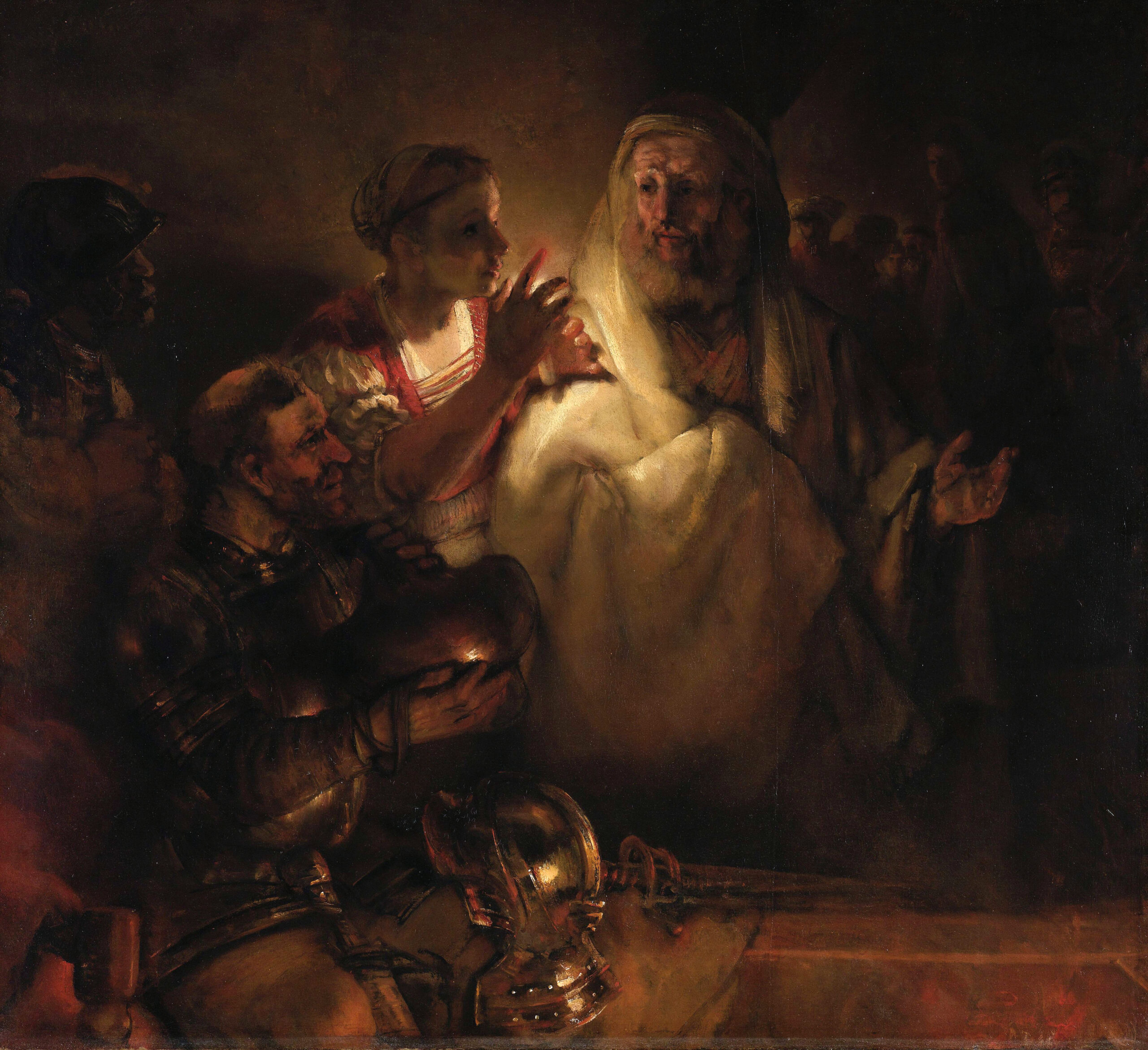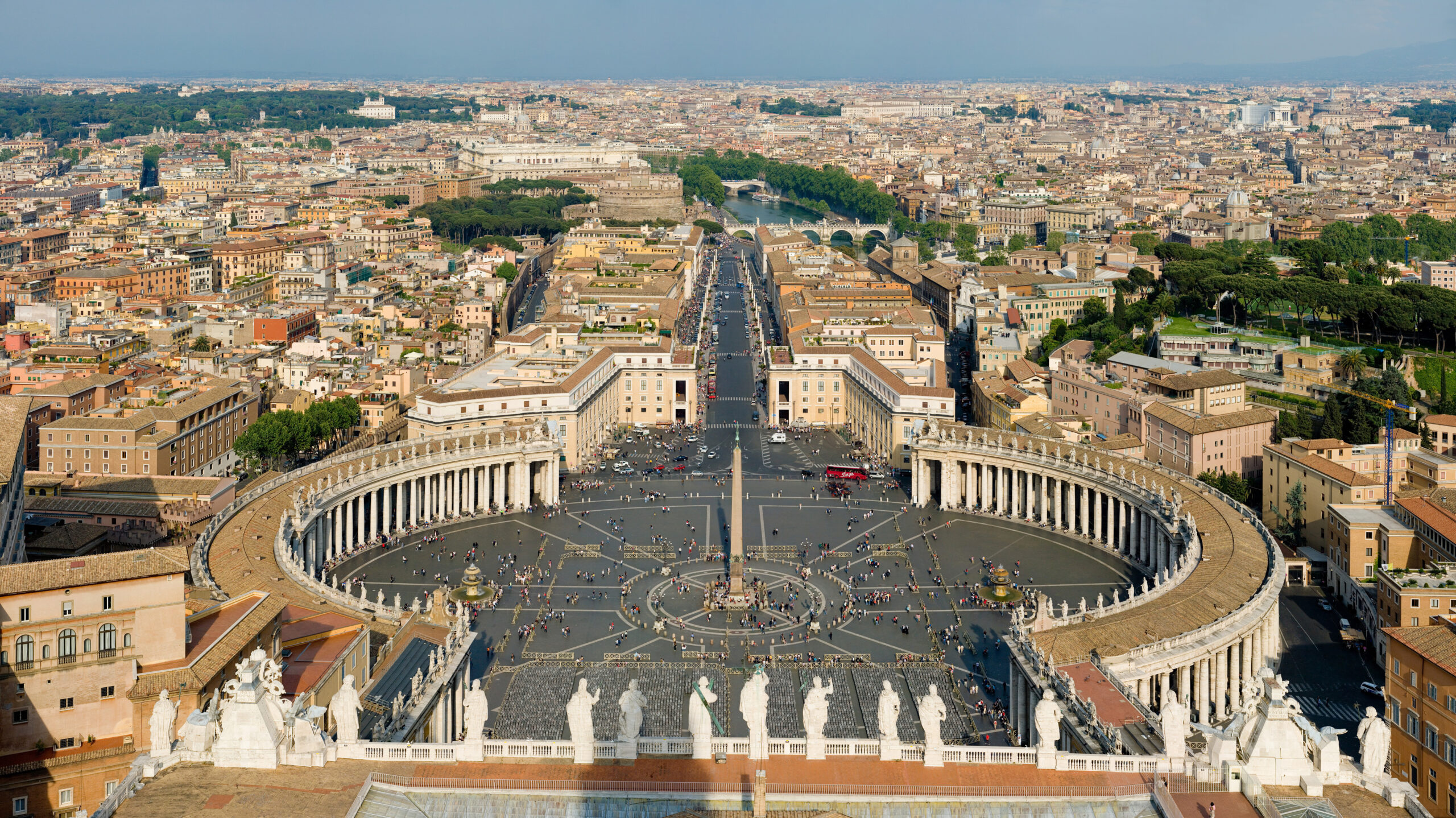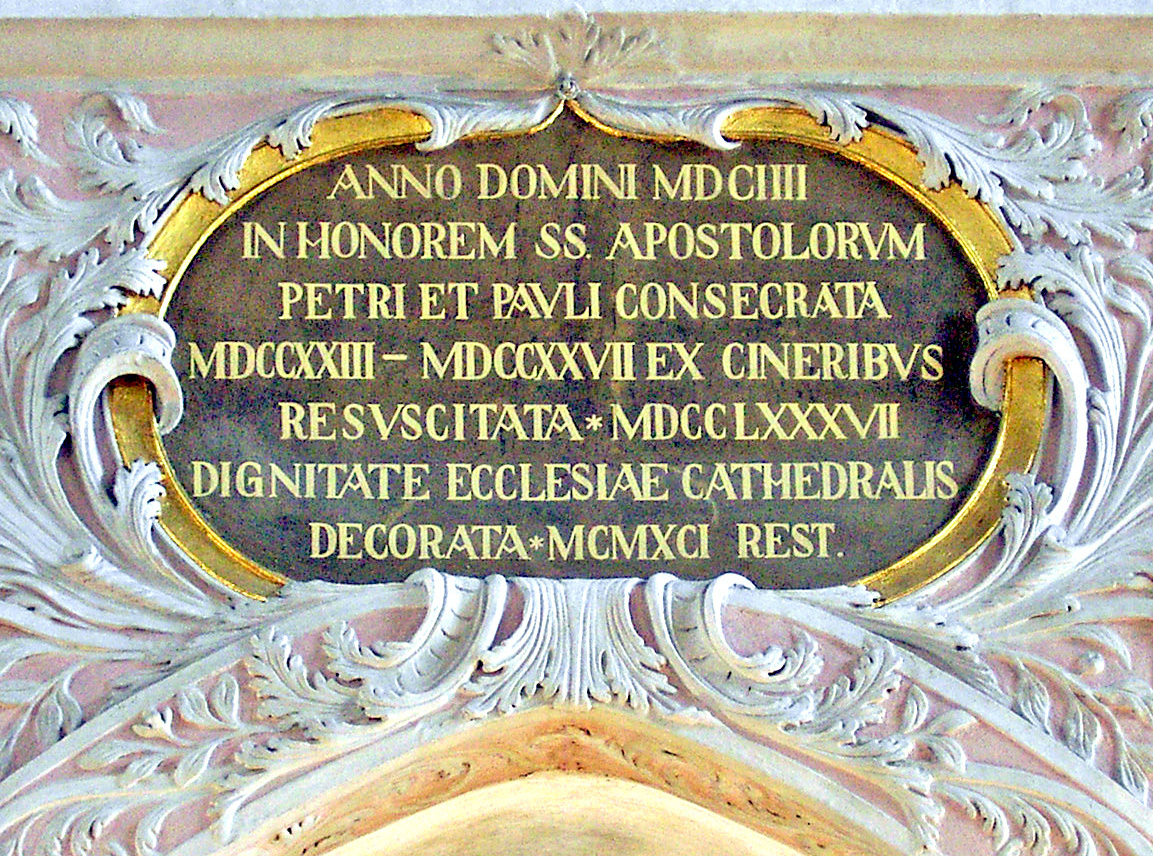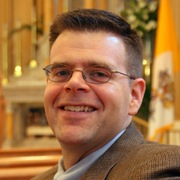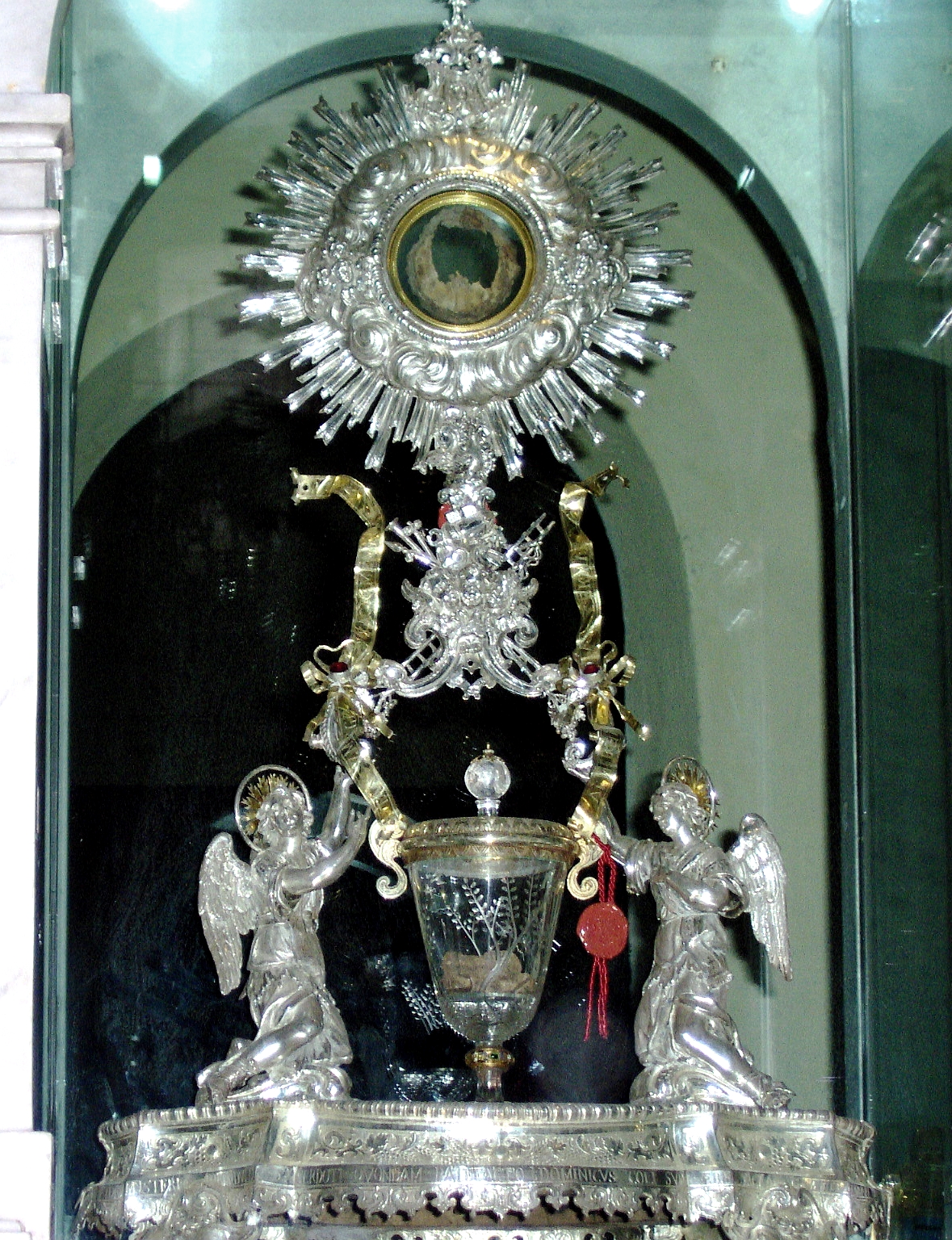When it comes to Jesus, Christians believe he is fully human and fully divine, and he has always been divine given that he is the second person of the Trinity, God the Son. Mormons, however, believe that Jesus Christ was once an “intelligence” such as us who existed from eternity. He was not always divine, and he was not always the Son of God. Instead, God chose him to become the “firstborn” among the intelligences by giving him the first spirit body. In 1909, the Mormon Church’s leadership released a statement that read, “The Father of Jesus is our Father also. . . . Jesus, however, is the firstborn among all the sons of God—the first begotten in the spirit, and the only begotten in the flesh. He is our elder brother, and we, like him, are in the image of God.”
Instead of being completely different in kind from human beings, this counterfeit Christ is different from us only in degree (hence the term “eldest brother”). He is just a more exalted spirit-child of God the Father, which reduces him from being the eternal creator of the universe to being merely one highly praised part of it, which is antithetical to true Christian belief.”
Our Eldest Brother
“Once a young woman sitting next to me on an airplane noticed I was reading a book about Mormonism. She said she had recently joined the Mormon Church (the official name for Mormons is “members of the Church of Jesus Christ of Latter-day Saints,” which some people abbreviate to “LDS”)164 and so we struck up a conversation. She said she didn’t like it when people held ignorant views toward Mormons and I agreed that bigoted attitudes are unacceptable.
“I mean, we all believe in Jesus, so isn’t that what matters?” she asked.
I gently explained to her that Christians and Mormons don’t mean the same thing when they refer to the person of Jesus. Gordon Hinkley, the former president of the Mormon Church, even said, “As a church we have critics, many of them. They say we do not believe in the traditional Christ of Christianity. There is some substance to what they say.”165
Christians believe there is one God who exists as three divine, eternal persons: the Father, Son, and Holy Spirit, and that only God is eternal (see Psalm 90:2). Mormons, on the other hand, believe there are an infinite number of “intelligences” that have existed for all eternity. God, whom Mormons call “Heavenly Father,” transforms these intelligences into human beings and the faithful Mormons among them will become gods in the next life, going on to create more human beings who will continue this cycle of “exaltation.”166
Mormons believe that Jesus Christ was once an “intelligence” like us who existed from eternity past. He was not always divine, and he was not always the Son of God. Instead, God chose him to become the “firstborn” among the intelligences by giving him the first spirit body.167 In 1909, the Mormon Church’s leadership released a statement that read, “The Father of Jesus is our Father also. . . . Jesus, however, is the firstborn among all the sons of God—the first begotten in the spirit, and the only begotten in the flesh. He is our elder brother, and we, like him, are in the image of God.”168
Instead of being completely different in kind from human beings, this counterfeit Christ is only different from us in degree (hence the term “eldest brother”). He is just a more exalted spirit-child of God the Father, which reduces him from being the eternal creator of the universe to being merely one highly praised part of it.
But how can that be true if . . . . . . There Is Only One God?
Mormonism can best be described as a kind of henotheism, or belief in the existence of many gods (in this case, infinitely many), only one of whom deserves our worship. Mormons strive to become “exalted” and develop into a god just like Heavenly Father, who was once a man like us. Joseph Smith even said at a funeral for Mormon elder King Follett, “You have got to learn how to be gods yourselves, and to be kings and priests to God, the same as all gods have done before you.”169
Christians, on the other hand, are monotheists who believe there is one God, though he exists as a Trinity of three persons, each of whom equally possesses the divine nature.170 And although Mormons will tell you that they, too, believe in “one God,” what they mean is that they believe in one collection of gods. For Mormons, the Father, Son, and Holy Spirit (or “the Holy Ghost”) are three gods who cooperate so perfectly they might as well be one God. But this is like saying that a perfectly cooperating baseball team has but one player.
If God or Heavenly Father used to be a man who was later exalted into godhood, then the entire universe would be without an explanation, because we could always ask the atheist’s favorite question: “Who created God?” Positing an infinite cycle of men becoming gods does not explain the existence of the universe any more than an infinitely long chain could explain why a chandelier is hanging in a room.171 It has to be attached to the ceiling, and likewise, the only explanation for why the universe exists at all is because the God of Christianity, who just is perfect existence itself, created it.
Scripture also clearly teaches there is only one God, and we are to worship him alone. There’s no doubt that the early Israelites were also henotheists, because they were often tempted to worship other gods that they presumed really existed. But through gradual, divine revelation God’s people came to understand that Yahweh was not only superior to all other gods—he was real and they were not. In Isaiah 45:5, God says, “I am the Lord, and there is no other, besides me there is no God.”
In Isaiah 43:10 God declares, “Before me no god was formed, nor shall there be any after me.” This can’t refer to false gods or idols, because many of those are still “formed” to this day. Instead, the Bible teaches that no other god besides the one true God has ever existed, and no other god ever will exist. Even scholars who reject evidence for practices of monotheism early in the Old Testament agree that the prophet Isaiah is a witness to God’s people having finally rejected the existence of all other deities except for their own God Yahweh.172
The New Testament also firmly teaches not just that Jesus is God, but that there is only one God. Jesus described God as “the only God” (John 5:44) and “the only true God” (John 17:3). St. Paul describes God as “the only wise God” (Rom. 16:27) and the only being who possesses immortality (1 Tim. 6:16). St. Ignatius wrote in the early second century that the early Christians were persecuted because they “convince the unbelieving that there is one God, who has manifested himself by Jesus Christ his Son.”173
If there is only one God, and the Father, the Son, and the Holy Spirit are fully divine and distinct from one another (which we will discuss in the next chapter), then the doctrine of the Trinity logically follows. Jesus could not have been an “intelligence” that another god elevated to divinity, but must instead be an inseparable part of the one, Triune God who alone has eternal, necessary existence.
. . . The Bible Teaches That Jesus Created All Things
Mormons believe that the world is eternal—that it never had a beginning—and God is just a being who exists within it. The God of this world created it in the same way a baker “creates” a cake—by combining pre-existing ingredients. Eric Shuster, a Mormon convert from Catholicism, writes, “Latter-day Saint doctrine holds that the universe was formed and organized, not created ex nihilo, ‘out of nothing’ as Catholic doctrine holds. This is not an insignificant difference.”174
Christians, on the other hand, have always believed that God created all things out of nothing at some point in the distant past. Hebrews 11:3 says that “the world was created by the word of God, so that what is seen was made out of things which do not appear” (in some other translations, “was not made out of visible things.”). The Shepherd of Hermas, an early Christian writing from around the year A.D. 80, says, “First of all, believe that there is one God who created and finished all things, and made all things out of nothing. He alone is able to contain the whole, but himself cannot be contained.”175
According to Mormonism, in the beginning Heavenly Father sent the pre-incarnate Jesus (whose name at that time was Jehovah) and the archangel Michael to form our world from pre-existing matter. But this contradicts Isaiah 44:24, where God says, “I am the LORD, who made all things, who stretched out the heavens alone, who spread out the earth—Who was with me?” Colossians 1:16–17 also tells us that it was through Jesus that all things were created, Jesus is before all things, and in Jesus all things hold together.176
If God was alone when he created all things, then he did not receive help from separate spiritual beings like Jesus or Michael the Archangel. And if he truly created all things, then he did not form anything from uncreated matter. Finally, if the New Testament tells us that Jesus created all things, and the Old Testament says that God alone created all things, this must mean that Jesus is the God of the Old Testament who would gradually come to be revealed as three distinct persons who exist as the one God that created the world.
Reducing Jesus from being our Creator to only our “eldest brother” leads to an interesting consequence: Jesus becomes not only our brother but the brother of Heavenly Father’s other spirit children—which includes the fallen angel Lucifer. Mormons say this doesn’t mean that Jesus and Satan deserve the same respect, are similar in status, or that Mormons worship Satan. Nonetheless, Jesus and the devil are both God’s spirit children—along with us.
Some Mormons cite the Bible’s description of Jesus as “the firstborn among many brethren” (Rom. 8:29) and the “firstborn of creation” (Col. 1:15) as evidence that he was created to be our “eldest brother” and is not himself the eternal creator of all things.177 But Romans 8:29 refers to how Jesus was the first human to take part in the glory of the resurrection—not that Jesus was created. That verse says God planned for others to be “conformed” to Christ’s image, becoming his brethren by sharing in the future glory that he first received.
Regarding Colossians 1:15, the term firstborn doesn’t always mean “the oldest child within a family.” The Greek word for “firstborn,” prototokos, can refer to a special position that is worthy of honor and privilege. For example, in Psalm 89:27 God says of David, “I will make him the firstborn, the highest of the kings of the earth.” Obviously, David was not the first king ever to reign on earth. And we know that he was the youngest son in his family, not the oldest (1 Sam. 16:11). The psalm here indicates how he was placed in a position of preeminence or authority over all other kings. And just as the firstborn of kings is the one who rules over kings, the firstborn of creation (or Jesus) is the one who rules over creation.
. . . It’s Praiseworthy to Pray to Jesus
In Revelation 22:13, Jesus says, “I am the Alpha and the Omega, the first and the last, the beginning and the end.” Jesus is not one more god in an infinite line of gods nor is he a created being. He is instead eternal like the Father, who is also described as “the Alpha and the Omega, the beginning and the end” (Rev. 21:6). Jesus is the one true God we worship, along with the Father and the Holy Spirit.
But although Mormons pray to the Father, they do not pray to the Son, because from their perspective Jesus is closer to our level of existence than to Heavenly Father’s. When they are asked why they don’t pray to Jesus, most Mormons will say something like, “Jesus taught his disciples to address their prayers to ‘our Father.’ He never told us to pray to him.”
Yet it doesn’t follow that just because Jesus explicitly taught one way to pray that all other ways of prayer are unacceptable. For instance, Mormons give thanks to Heavenly Father even though Jesus never mentioned thanksgiving when he taught us the Lord’s Prayer. It seems more likely that Mormons only pray to the Father because they are following a prescription in the Book of Mormon where Jesus says, “[Y]e must always pray unto the Father in my name” (3 Nephi 18:19).
But before he was martyred, St. Stephen prayed directly to the ascended Jesus, saying “Lord Jesus, receive my spirit.” And Paul wrote, “[M]ay our Lord Jesus Christ himself and God our Father . . . comfort your hearts and strengthen them in every good work and word” (2 Thess. 2:16–17). Notice that Paul does not ask the Father “in Jesus’ name” to comfort believers. He instead petitions both the Father and the Son. In his commentary on Thessalonians, Gene Green notes:
To address prayers to the Lord Jesus (so 2 Thess. 3:5,16) in the same breath with God the Father implies a very high Christology. This prayer would be proper only if the apostles held to the divinity of Christ. This point is even clearer in the prayer of 2 Thessalonians 2.16, where the order of the names is reversed.178
As I once said to two Mormon missionaries, “I appreciate that you’re trying to share your faith, but I love being a Christian. The reason I could never become a Mormon is because I would miss the relationship I have with Jesus Christ. I love praying to Jesus and knowing he isn’t ‘a god’ but, as the apostle Thomas said, ‘My Lord and my God’” (John 20:28).
*****************
164 Although Mormons call themselves a “church,” strictly speaking they are not a church because they do not possess valid holy orders or even valid beliefs about central Christian doctrines like the Trinity. But for sake of simplicity, I use the term “church” to describe their organization. Also, in 2018 their president Russell Nelson released a statement expressing a preference for people to call that church by its full name and no longer by any “Mormon” nickname. In my own writings on the subject, I will still use terms like Mormon and LDS for readability and because I don’t think they’re offensive. In conversations with individual Mormons, I’d recommend following their lead about which terms they prefer, since not all of them may agree with the new change.
165 Gordon B. Hinkley, “We Look to Christ” Ensign (May 2002). Available online at: https://www.lds.org/ensign/2002/05/we-look-to-christ?lang=eng.
166 St. Athanasius said, “[W]e become by grace what God is by nature.” (De Incarnatione, I). In other words, God gives us his divine life so that we resemble him but we never become him. Renowned historian of Christianity Jaroslav Pelikan says that the doctrine that men could become like God in holiness (what is called theosis) was, among people like Athanasius, “not to be viewed as analogous to classical Greek theories about the promotion of human beings to divine rank, and in that sense not to be defined by natural theology at all; on such errors they pronounced their ‘Anathema!’” Jarolslav Pelikan, Christianity and Classical Culture: The Metamorphosis of Natural Theology in the Christian Encounter with Hellenism (Yale University Press, 1995), 318. In other words, the Church Fathers would not have recognized the Mormon doctrine of exaltation as being a variation of their doctrine of theosis. Instead, they would have considered it heresy.
167 The Mormon sacred text Doctrine and Covenants describes Jesus telling Joseph Smith, the founder of the Mormon faith, “I was in the beginning with the Father, and am the Firstborn; And all those who are begotten through me are partakers of the glory of the same, and are the church of the Firstborn. Ye were also in the beginning with the Father; that which is Spirit, even the Spirit of truth” (93:31–33).
168 “Origin of Man” Improvement Era, November 1909, 75–81. Available online at: https://www.lds.org/ensign/2002/02/the-origin-of- man?lang=eng.
169 Joseph Smith Jr., “The King Follett Sermon,” Ensign, May 1971, 13. Available online at: https://www.lds.org/ensign/1971/04/the-king-follett-sermon?lang=eng.
170 Joseph Smith said of the Trinity, “[T]hree in one, and one in three! It is a curious organization. . . . All are to be crammed into one God, according to sectarianism. It would make the biggest God in all the world. He would be a wonderfully big God—he would be a giant or a monster.” Teachings of the Prophet Joseph Smith, 372. But each person of the Trinity is not a part of God. Instead, each member is God, and because of this each member of the Trinity deserves the same level of worship, including the second person of the Trinity who became the man Jesus Christ.
171 For a more extended discussion of this argument for the existence of the traditional monotheistic God see Trent Horn. Answering Atheism: How to Make the Case for God with Logic and Charity (San Diego: Catholic Answers Press, 2013), 123–136.
172 Robert Karl Gnuse, No Other Gods: Emergent Monotheism in Israel (Sheffield: Sheffield Phoenix Press, 1997), 84.
173 Letter to the Magnesians 8:1. 174 Eric Shuster, Catholic Roots, Mormon Harvest (Springville, UT: Cedar Fort, Inc: 2009), 62. 175 The Shepherd 2:1.
176 This passage is so damaging to people who deny the Trinity and the divinity of Christ that some, like Jehovah’s Witnesses, mistranslate it to say Jesus created “all other things,” even though the Greek words for other (heteros and allos) are not in the original text.
177 Other critics cite Revelation 3:14 because it refers to Jesus as “the beginning of God’s creation. But in Revelation 3:14, the Greek word translated “be- ginning,” or arche, can also mean ruler, source, or origin. Indeed, in Revelation 21:6 the Father calls himself “the beginning,” but this does not mean the Father had a literal beginning. What this verse means is that Jesus is the source of all creation.
178 Gene L. Green, The Letters to the Thessalonians (Grand Rapids, MI: Wm. B. Eerdmans, 2002), 176.
Horn, Trent . Counterfeit Christs : Finding the Real Jesus Among the Impostors (pp. 93-99). Catholic Answers Press. Kindle Edition.
The Mormon Christ
-by Isaiah Bennett
“How can you possibly deny that we are Christians,” Mormons ask, “when even our church is named for Christ?”
“We acknowledge him to be the Creator of this world.”
“We rejoice in the great atonement he wrought.”
“His name is on nearly every page of the Book of Mormon, which we call ‘another testament’ to him.”
“We conclude all our prayers in his name.”
“You cannot doubt that we love and serve him.”
We don’t, in fact, deny that many Mormons try to love and serve the Lord Jesus. Active members do genuinely try to make him and his will a center in their daily lives. But as with many other Mormon beliefs, the teachings on Christ are a maze of misunderstanding, misdefinition, and misapplication. Mormon scriptures are contradictory, and Mormon prophets deny, redefine, or ignore one another’s teachings.
Brief Catholic View
The Catholic apologist Frank Sheed uses the term “double stream” to help us understand the union of human and divine in Jesus, as expressed by his words and actions. At times Jesus Christ speaks or acts simply as a man. He is tired, hungry, or sad. He prays to God the Father. He expresses feelings of grief in Gethsemane (Matt. 26:38) and abandonment on Calvary (Matt. 27:46). Christ, in his human nature, was a man like us in all things but sin (Heb. 4:15).
At other times he says and does things that go far beyond the words and actions of a mere man. He demands his followers love him above all others, even family. No one who comes to him will be confounded. All must learn of him, for he is the way, the truth, and the life. “No man has ever spoken like this!” He sealed his words with divine signs: giving light to the blind and life to the dead. Because he possessed a divine nature as well as a human one, Jesus accepted without hesitation the adoration of his followers (e.g., John 20:28-29).
The gospels are replete with accounts of the apostles’ stumbling attempts to understand their master. While at times he evinced “merely” human compassion for a hungry crowd or a widowed mother, he responded in a manner truly divine: He fed the crowd and raised the dead son. He gently reproved the mother of James and John, saying it was not his but his Father’s decision to grant a place of privilege in the kingdom (Matt. 20:20-23). Soon after, however, the Lord claimed authority to judge all men, to separate them, and to usher them to seats of glory or places of torment (Matt. 25).
This “double stream” is braided not only through the words and actions of the Lord Jesus but also through the meditation and reflection of his apostles and evangelists. Thus, Paul can affirm that Christ emptied himself of glory, took on the form of a servant, and humbled himself (Phil. 2:6-8), while also proclaiming that in Christ “the whole fullness of deity dwells bodily” (Col. 2:9).
Mormon Teachings on Jesus Christ
The Son Was Made by a Divine Man and Woman
According to Mormons, Jesus Christ is their elder brother, since he was the firstborn in the spirit world. That is, God the Father and one of his heavenly wives begot Christ’s spirit at some point in the eternity before earthly creation. This was made possible because the Father, who had previously lived, died, and was resurrected in some other world, had finally attained divinity for himself. As part of the blessings of godhood, he was given an eternal wife or wives with whom to procreate spirit children.
The Son—and All Created Things—Pre-Existed from All Eternity
The Mormon church correctly teaches that the Son exists from all eternity. It makes two mistakes, however. First, it holds that the Son’s pre-existence was only as vague, unformed matter until his heavenly parents begot his spirit. Second, Mormons believe that his pre-existence-as they define it-is the pattern for all created beings. Thus, for Mormons, every person has existed from eternity; each spirit came into being in heaven by the union of God the Father and one of his heavenly wives. That spirit is eventually placed into the human body created by earthly parents.
Jesus Christ can be called the “firstborn” only because his was the first “spirit body” formed by his heavenly parents. There then followed the “spirit bodies” of all other rational beings.
Yet Scripture clearly states the Son created all things and is himself uncreated: “For by him were all things created, that are in heaven, and that are in earth, visible and invisible, whether they be thrones, or dominions, or principalities, or powers: all things were created by him, and for him: And he is before all things, and by him all things consist” (Col. 1:16-17).
We do well to remember the distinction presented earlier between Christ’s divine and human natures. As the Second Person of the Trinity, the Son of the Father, Christ exists eternally. There never was a time when he was not. Because God is perfect and therefore changeless (change implying a movement either toward or away from some ideal or perfection), the Son did not undergo a “reformation” of component elements, bringing him into self-awareness or personhood. Jesus possessed both a divine and a human nature from the moment of his earthly conception. He did not grow into divinity either before or while living a mortal life among men.
Mormons admit Christ became God before he took on a mortal estate. Sometimes, though, their terminology is reminiscent of Greek or Roman mythology. One Mormon writer phrased his view this way:
“Mary, heavy with child, traveled all that distance on mule-back, guarded and protected as one about to give birth to a half-Deity. No other man in the history of this world of ours has ever had such an ancestry-God the Father on the one hand and Mary the Virgin on the other. . . . Jesus lived in a lowly home, the only man born to this earth half-Divine and half-mortal” (The Life and Teachings of Jesus and His Apostles, 10).
Contrast this with the Catholic belief that Jesus Christ is fully divine (Col. 2:9) and fully human (Heb. 4:15).
The Virgin Birth
Active Mormons claim God the Father (and his heavenly wife) not only brought forth the spirit of Christ in the pre-existence, they believe the Father also directly participated in the Lord’s earthly conception. This inventive doctrine, understandably, raises the ire of many devout Christians, particularly as it has found expression in the theological discourses of some Mormon prophets and apostles:
Brigham Young: “The man Joseph, the husband of Mary, did not, that we know of, have more than one wife, but Mary the wife of Joseph had another husband. [The babe in] the manger was begotten, not by Joseph, the husband of Mary, but by another Being. Do you inquire by whom? He was begotten by God our heavenly Father” (Journal of Discourses 2:268).
Joseph F. Smith, sixth Mormon prophet (speaking to young children): “You all know that your fathers are indeed your fathers and that your mothers are indeed your mothers. . . . You cannot deny it. Now, we are told in Scripture that Jesus Christ is the only begotten Son of God in the flesh. Well, for the benefit of the older ones, how are children begotten? I answer just as Jesus Christ was begotten of his father” (Family Home Evening, 1972, 125).
Bruce R. McConkie, Mormon apostle and theologian: “Christ is . . . the Only Begotten Son . . . of the Father. . . . Each of the words is to be understood literally. ‘Only’ means only. ‘Begotten’ means begotten; and ‘Son’ means son. Christ was begotten by an immortal Father in the same way that mortal men are begotten by mortal fathers” (Mormon Doctrine, 546-547).
Orson Pratt, early Mormon apostle and theologian: “The fleshly body of Jesus required a Mother as well as a Father. Therefore, the Father and Mother of Jesus, according to the flesh, must have been associated together in the capacity of husband and wife: hence the Virgin Mary must have been, for the time being, the lawful wife of God the Father” (The Seer, 158-159).
Mary thus had two husbands, the Father and Joseph. In the Mormon view, she was perhaps the only woman in history lawfully permitted to engage in polyandry.
In trying to describe how Mary, in the process of natural intercourse with her glorified Father and God, could remain a virgin, McConkie resorts to redefining the term. A virgin, he implies, is a woman who has not had sexual intercourse with a mortal man. The Heavenly Father is a resurrected, immortal man. Therefore, there was no loss of Mary’s virginity (The Mortal Messiah, vol. 1, 314). This is another example of how Mormons hijack and redefine orthodox Christian terms.
Jesus Christ: A Subordinate God
Catholics adore God alone. We give full worship and obedience to the Father, the Son, and the Holy Spirit. The three are co-eternal, all-holy Persons. We pray to each member of the Trinity. We seek to cultivate a relationship of love and reverence with each Person.
This cannot be said for the Mormon. Jesus Christ, the Son of God, is a second God. There was a time in which he, as God, did not exist, but had to await the organization of his spirit by his heavenly Father and Mother. Thereafter, he was obedient to the heavenly Father in all things and progressed to eventual godhood (Mormon Doctrine, 129), working out his own divinity. Now he has now achieved a fullness of exaltation and is spoken of as God. But he was not always so.
Within the past year (written 9/1/1999), the Church of Jesus Christ of Latter-Day Saints changed its logo, now writing the name “Jesus Christ” larger than the rest of its title. The purpose for the change, the church said, is to emphasize its allegedly Christ-centered character. Yet this same church forbids prayer to Jesus Christ.
Not only does Mormon theology teach Christ’s inferiority to the Father, it insists he be excluded from the honor accorded the Father, the supreme God. Therefore, all prayers, whether personal or public, are to be addressed to the Father only. No one is to pray to the Son or the Holy Ghost. Though his picture adorns most Mormon homes and chapels; though he is referred often in the Book of Mormon; though every prayer and testimony is concluded “in the name of Jesus Christ,” Mormons are forbidden to pray to him.
Mormon theologian Bruce McConkie informed an audience at Brigham Young University: “We worship the Father and him only and no one else. We do not worship the Son and we do not worship the Holy Ghost. I know perfectly well what the Scriptures say about worshiping Christ and Jehovah, but they are speaking in an entirely different sense-the sense of standing in awe and being reverentially grateful to Him who has redeemed us. Worship in the true and saving sense is reserved for God the first, the Creator”(“Our Relationship with the Lord,” BYU Devotional, a March 2, 1982 monograph).
He may know “perfectly well” what the Scriptures say, but his interpretation of them is deficient. The Greek proskunéo refers to adoration or worship. As such, it is used in reference to God the Father throughout the Bible. But it is used in reference to the Son as well. See, for example, Matthew 2:11; 8:2; 9:18; 15:25; 28:9; 28:17; John 9:38; and Revelation 5:14.
Yet McConkie proclaimed a subordinate Christ to the BYU student body: “Though Christ is God, yet there is a deity above him, a deity whom he worships. . . . All of us, Christ included, seek to become like the Father. In this sense the Firstborn, our Elder Brother, goes forward as we do” (6-7). In other words, the Son worked out his own salvation, in part, by worshiping the Father.
Jesus Christ: Husband and Father
At this time, the Mormon church has no official position on whether or not Jesus Christ was married or had children. However, the Mormon leadership was not always so circumspect.
Orson Hyde, apostle under Joseph Smith and Brigham Young, declared Christ was not only married but was a polygamist who fathered children: “It will be borne in mind that once on a time, there was a marriage in Cana of Galilee; and on a careful reading of that transaction, it will be discovered that no less a person than Jesus Christ was married on that occasion. If he was never married, his intimacy with Mary and Martha, and the other Mary also whom Jesus loved, must have been highly unbecoming and improper to say the best of it”
President Jedediah M. Grant, member of the First Presidency with Brigham Young, on the ultimate cause of the Lord’s crucifixion: “The grand reason of the burst of public sentiment in anathemas upon Christ and his disciples, causing his crucifixion, was evidently based upon polygamy, according to the testimony of the philosophers who rose in that age. A belief in the doctrine of a plurality of wives caused the persecution of Jesus and his followers. We might almost think they were ‘Mormons’” (Journal of Discourses 1:346).
Many are familiar with LDS preaching on the great benefits of family. Jesus, many members think, must have shared fully in those blessings. Although large numbers of Mormons believe this notion of Jesus as husband and father, it has not been elevated to the level of universal doctrine. It’s not discussed much, if at all, with outsiders.
The Mormon church has recently added the subtitle “Another Testament of Jesus Christ” to its Book of Mormon. In light of Latter-Day Saints teachings on the Son of God, it would be more accurate to say they present to the world a “Testament of Another Jesus Christ.””
Love & truth,
Matthew
